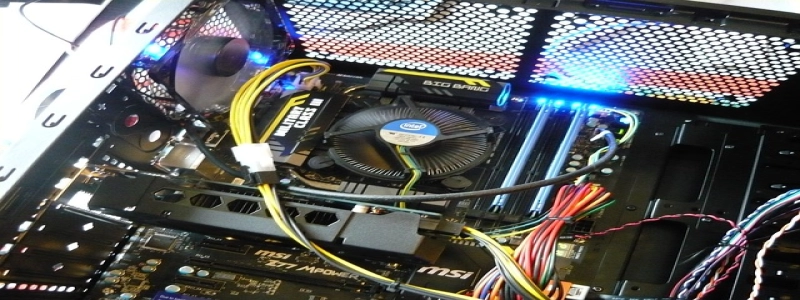Single Mode to Multimode Fiber Converter
I. Introduction
A. Definition of Single Mode and Multimode Fibers
B. Need for a Converter
II. Features of Single Mode to Multimode Fiber Converter
A. Compatibility
B. Fiber Type Conversion
C. Mode Conversion
III. Benefits of Using a Converter
A. Cost-Effective Solution
B. Easy Installation
C. Enhanced Flexibility
IV. Applications of Single Mode to Multimode Fiber Converter
A. Local Area Networks (LANs)
B. Data Centers
C. Telecommunications
V. Technical Specifications
A. Connector Types
B. Transmission Distance
C. Supported Wavelengths
VI. Installation Process
A. Physical Connection
B. Configuration Settings
VII. Troubleshooting Guide
A. Common Issues
B. Solutions
VIII. Conclusion
A. Summary of Benefits
B. Importance of Single Mode to Multimode Fiber Converter
I. Introduction
In the world of fiber optics, both single mode and multimode fibers play a critical role in transmitting data. Single mode fibers are used for long-distance communication, while multimode fibers are suitable for short-distance applications. However, there are situations where the need arises to convert from one fiber type to another, and that’s where a single mode to multimode fiber converter comes to the rescue.
II. Features of Single Mode to Multimode Fiber Converter
A. Compatibility
The converter ensures seamless compatibility between single mode and multimode fibers. It eliminates the need for infrastructure upgrades by allowing different fiber types to communicate with each other effectively.
B. Fiber Type Conversion
By using the converter, signals can be converted from single mode to multimode or vice versa without the loss of information. This feature expands the connectivity options and allows for efficient data transmission between different fiber networks.
C. Mode Conversion
The converter also facilitates mode conversion, which enables the transmission of data between single mode and multimode fibers with varying core diameters and light propagation characteristics.
III. Benefits of Using a Converter
A. Cost-Effective Solution
Rather than replacing the existing infrastructure or investing in new fiber optic cables, using a converter offers a cost-effective solution to connect single mode and multimode fibers. It eliminates the need for extensive rewiring and significantly reduces overall costs.
B. Easy Installation
The converter is easy to install and requires minimal technical expertise. It can be seamlessly integrated into the existing network without any disruption or downtime.
C. Enhanced Flexibility
With the converter, organizations gain the flexibility to upgrade or expand their network infrastructure without constraints associated with different fiber types. This adaptability ensures a smooth and efficient transition towards an advanced fiber optic network.
IV. Applications of Single Mode to Multimode Fiber Converter
A. Local Area Networks (LANs)
LANs often consist of both single mode and multimode fibers, depending on the distance requirements. The converter allows seamless communication between these different fiber types, ensuring efficient data transmission within LAN environments.
B. Data Centers
Data centers require reliable and efficient fiber optic connectivity for high-speed data transmission. The converter plays a vital role in connecting single mode and multimode fibers within data centers, enhancing network performance and reducing latency.
C. Telecommunications
Telecommunication networks often incorporate single mode and multimode fibers to cater to both long-distance and short-distance communication needs. The converter enables seamless integration between these fiber types, ensuring uninterrupted and reliable communication.
V. Technical Specifications
A. Connector Types
The converter supports various connector types, such as SC, LC, and ST, ensuring compatibility with different fiber optic cables and devices.
B. Transmission Distance
The converter is designed to handle specific transmission distances, allowing organizations to select the appropriate model based on their connectivity requirements.
C. Supported Wavelengths
It supports a wide range of wavelengths commonly used in fiber optic communication, ensuring compatibility with a variety of fiber optic networks.
VI. Installation Process
A. Physical Connection
The converter requires the physical connection of single mode and multimode fibers. This involves proper cleaning and alignment of the connectors to ensure reliable and efficient data transmission.
B. Configuration Settings
The converter may require minor configuration settings adjustments to optimize performance and ensure compatibility between single mode and multimode fibers.
VII. Troubleshooting Guide
A. Common Issues
The converter may encounter issues such as signal loss, poor connectivity, or compatibility problems. These issues can often be resolved through troubleshooting techniques.
B. Solutions
Troubleshooting techniques may involve checking fiber connections, ensuring proper alignment, and verifying compatibility between the converter and fiber optic devices. Seeking professional assistance may be necessary in complex scenarios.
VIII. Conclusion
A. Summary of Benefits
The single mode to multimode fiber converter offers a cost-effective solution to connect different fiber types, providing compatibility, fiber type conversion, and mode conversion. It enhances flexibility, simplifies installation, and enables efficient data transmission across various applications.
B. Importance of Single Mode to Multimode Fiber Converter
With the increasing demand for high-speed data transmission and connectivity, the converter plays a crucial role in bridging the gap between single mode and multimode fibers. It ensures seamless communication across different fiber networks, allowing organizations to leverage the benefits of both fiber types without significant infrastructure investments.







